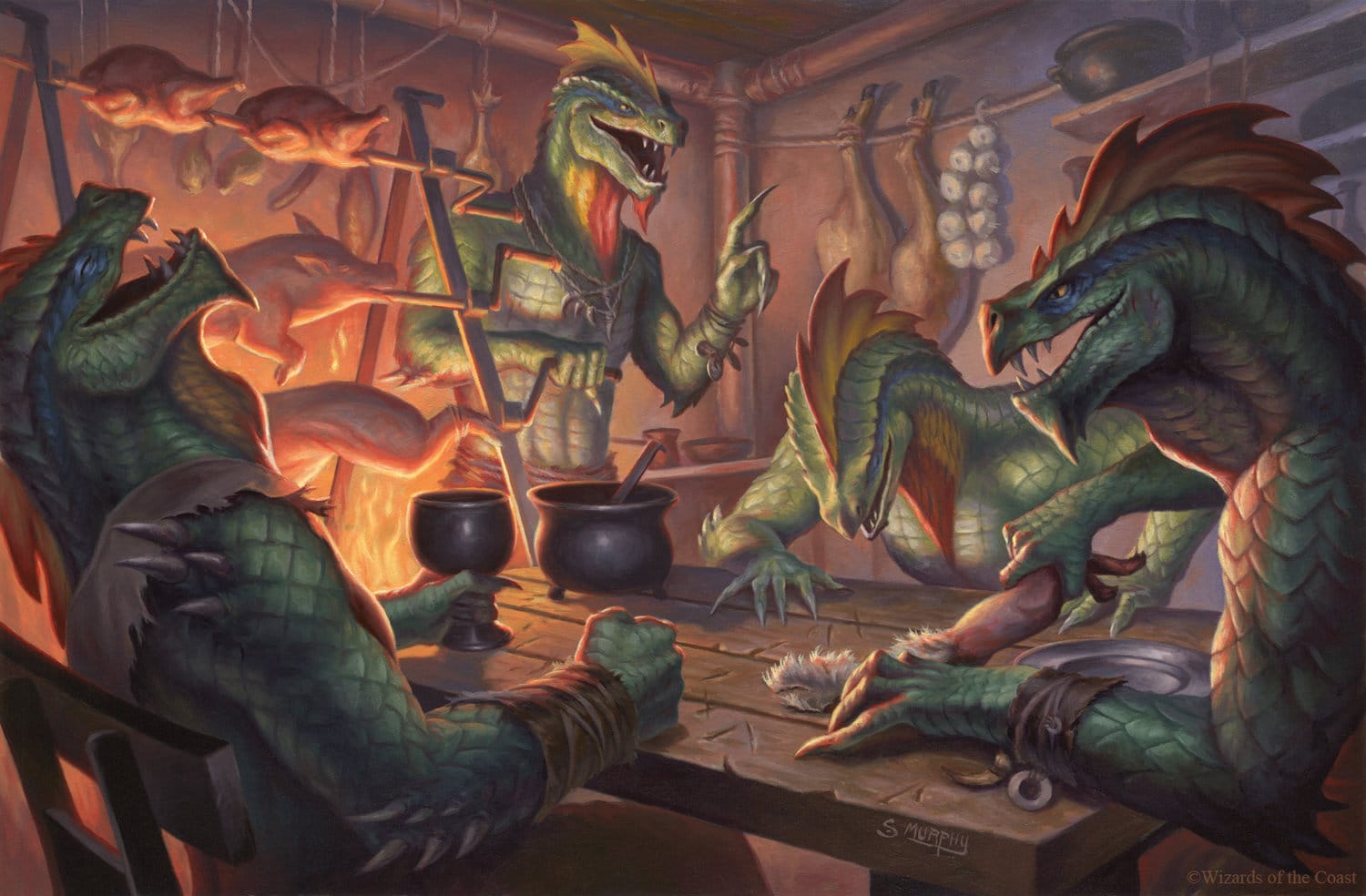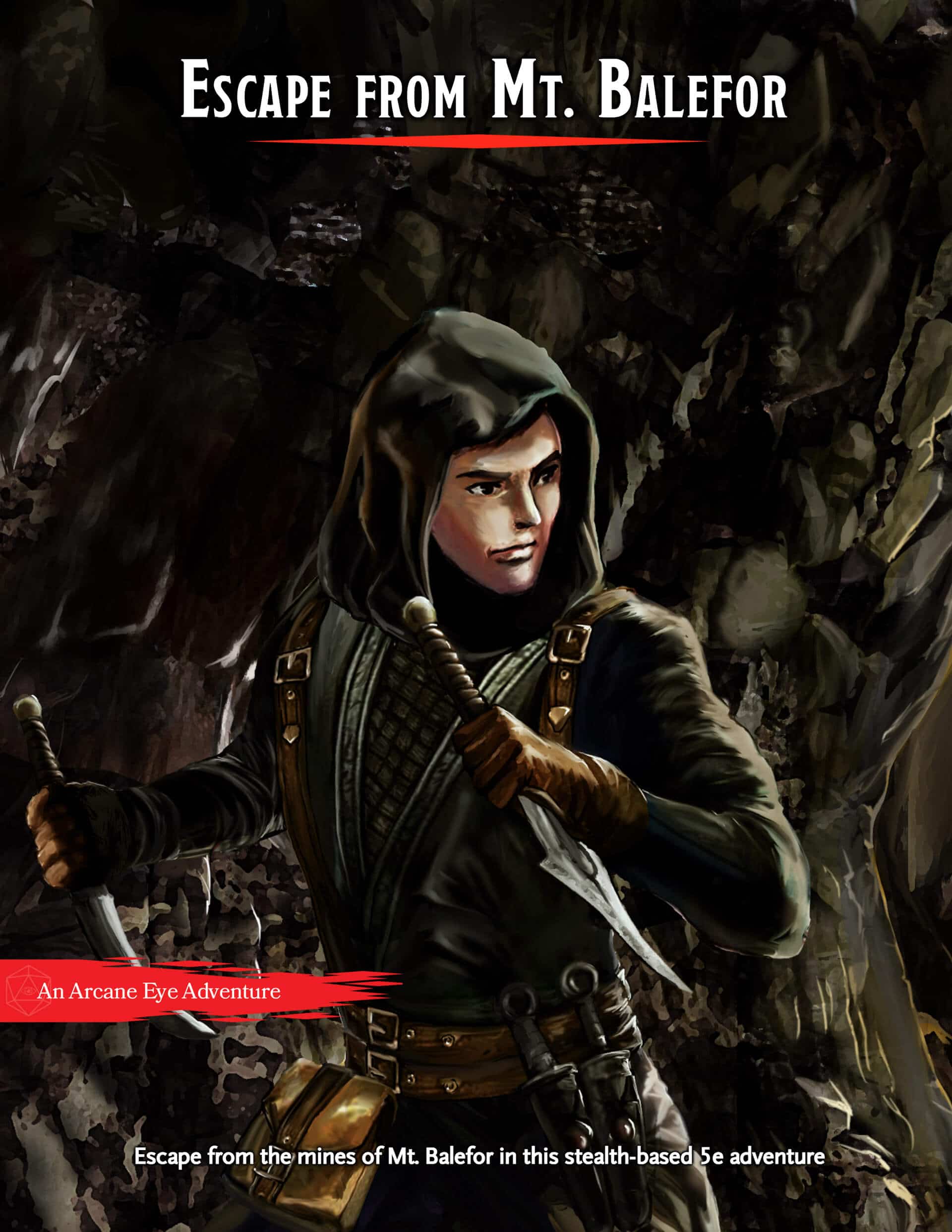Lizardfolk Guide 5e
Published on June 2, 2021, Last modified on May 5th, 2022

Scott Murphy - Wizards of the Coast - Preparing a Meal
What is this guide?
This guide is meant to give you an idea of whether or not the lizardfolk will be right for your 5e character build.
The color code below has been implemented to help you identify, at a glance, how good that option will be for your lizardfolk. This color coding isn’t a hard and fast rule; there are plenty of sub-optimized options out there that will be viable to your party and will be fun to play.
- Black is a trait shared by many races and or will not impact the effectiveness of your character build
- Red isn’t going to contribute to the effectiveness of your character build at all
- Orange Situationally good, but a below-average option otherwise
- Green is a good option
- Blue is a great option, you should strongly consider this option for your character
- Sky Blue is an amazing option. If you do not take this option your character would not be optimized
Tasha's Cauldron of Everything Update
Tasha's Cauldron of Everything has added the "Customizing Your Origin" option that may affect the ability score increases, languages, and proficiencies in this guide. To read more about this, visit our D&D Race Guide.
What are Lizardfolk in 5e?
Source: Volo's Guide to Monsters
Lizardfolk are not your typical swamp-dwelling humanoids. Unlike races such as the dragonborn, the way a lizardfolk’s mind works is completely different from most of the sentient races in the world of D&D. Lizardfolk see the world in a much more primal way, experiencing emotions in a less complex manner and categorizing those they come across as either predator or prey. Their emotions are primarily based on fear, aggression, and pleasure, valuing survival and functional utility above all else. If you are useful to a lizardfolk, they will keep you around and even protect you. If you happen to die in their presence, well… at least you’ll make for a tasty lunch.
Lizardfolk are a playable character race found in Volo’s Guide to Monsters.
Lizardfolk 5e Traits
Ability Score Increase: Getting +2 CON is great for every class, but a WIS increase really only matters for a select few.
Size: Medium is the typical size of most races, and is neither good nor bad.
Speed: Lizardfolk have a standard walking speed of 30 feet and a swimming speed of 30 feet. Having a swimming speed can be extremely useful, especially when playing in an aquatic-focused campaign.
Bite: Normally, improved unarmed strikes aren’t very good. However, combined with the lizardfolk’s trait Hungry Jaws, there is a use for Bite other than when you find yourself without a weapon. Additionally, biting is marginally better than races that can use claws because you can bite without a free hand.
Cunning Artisan: Cunning Artisan is a cool racial trait, but is only situationally useful. If you or your friends get separated from your weapons but you still have a knife on hand, this is a good way to quickly craft something to defend yourself with. You can also create weapons with the intention of selling them to make some money for your party.
Hold Breath: Holding your breath for 15 minutes is good in a pinch, such as if you unexpectedly find yourself underwater or if you need to retrieve something from the bottom of a lake. For any longer underwater missions, especially if you want your party to join you, you will definitely still need something like the Water Breathing spell.
Being able to hold your breath also helps if you run into gas traps or enemies with spells like Stinking Cloud.
Hunter’s Lore: Two free skill proficiencies is amazing, especially because the list you can choose from is very good. Every character wants Perception proficiency so if you don’t have another way to get it, you get it easily here.
Natural Armor: Natural Armor is really great if you are running around without armor or are playing a class that has a difficult time pumping their AC. You can use a shield with Natural Armor so you should be able to get a sizeable AC score.
Hungry Jaws: Hungry Jaws is a reason to use your Bite attack. The temporary hit points you can gain from a successful attack aren’t huge and this can only be used once per short rest, but at least it isn’t wasted if you miss your attack. At low levels, the temporary hit points could very easily mean the difference between life and death. Hungry Jaws is a good way to use up your bonus action if you have nothing else going on during a turn.
Sources Used in This Guide
- BR: Basic Rules
- GotG: Bigby Presents: Glory of the Giants
- SotDQ: Dragonlance: Shadow of the Dragon Queen
- ERLW: Eberron: Rising from the Last War
- EEPC: Elemental Evil Player’s Companion
- EGtW: Explorer’s Guide to Wildemount
- FToD: Fizban's Treasury of Dragon
- GGtR: Guildmasters' Guide to Ravnica
- MotM: Monsters of the Multiverse
- MToF: Mordenkainen’s Tome of Foes
- MOoT: Mythic Odyessys of Theros
- PAitM: Planescape: Adventures in the Multiverse
- PHB: Player's Handbook
- SAiS: Spelljammer: Adventures in Space
- SCoC: Strixhaven: A Curriculum of Chaos
- SCAG: Sword Coast Adventurer’s Guide
- TCoE: Tasha’s Cauldron of Everything
- TTP: The Tortle Package
- WBtW: The Wild Beyond The Witchlight
- VRGtR: Van Richten's Guide to Ravenloft
- VGtM: Volo's Guide to Monsters
- XGtE: Xanathar’s Guide to Everything
